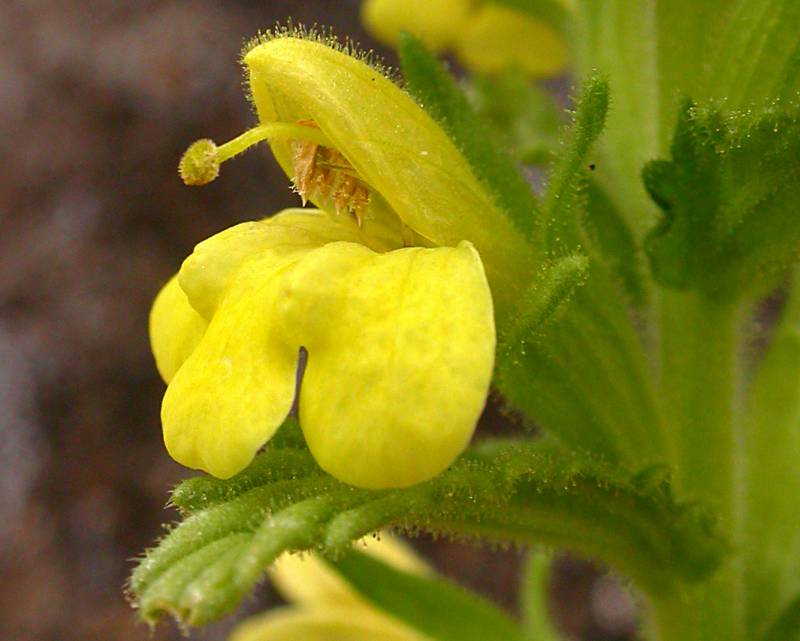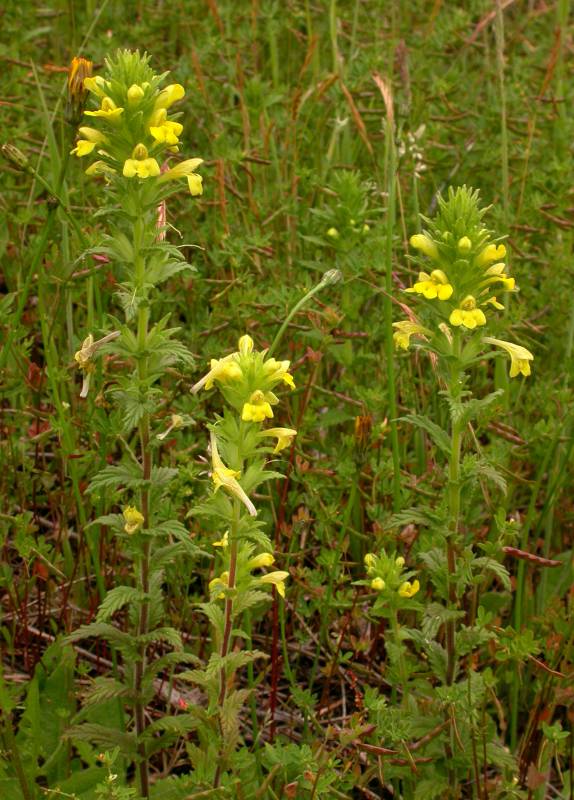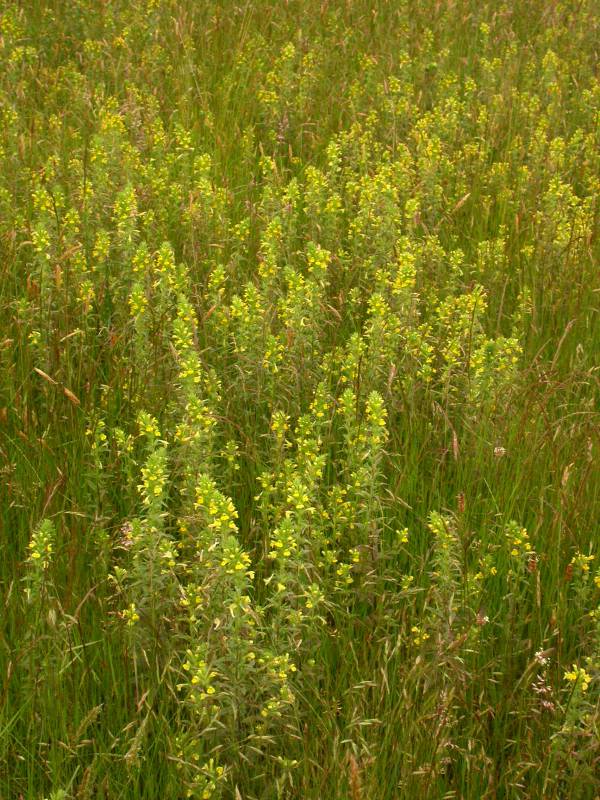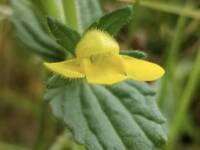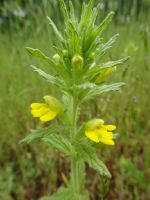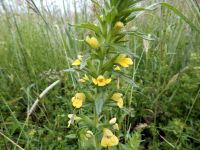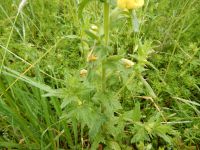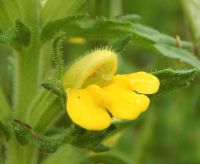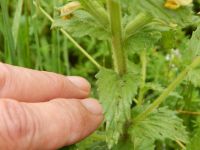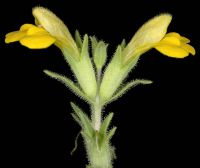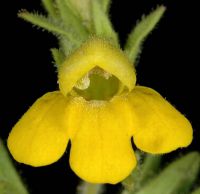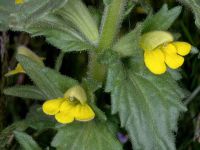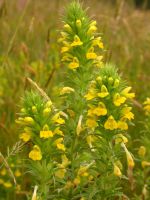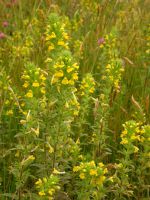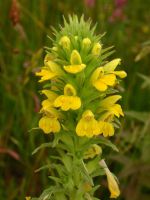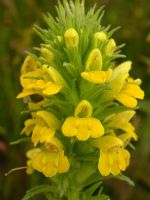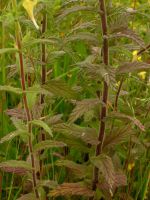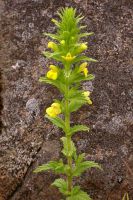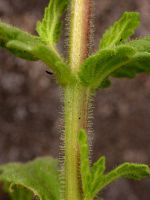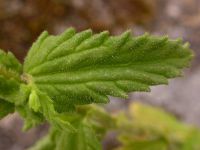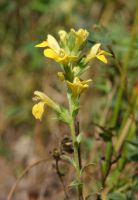Distribution: Occurring west of the Cascades crest in Washington; British Columbia to California; also in south-central U.S.
Habitat: Roadsides, fields, pastures, ditches, wastelots, and other disturbed open areas at low elevations.
Flowers: June-August
Origin: Introduced from Eurasia.
Growth Duration: Annual
Conservation Status: Not of concern
Pollination: Bumblebees, bees, flies
Erect annual from fibrous roots, the stem usually simple, 1-7 dm. tall; herbage with coarse, spreading hairs, these becoming glandular upward.
Leaves all cauline, ovate to lanceolate, with rounded teeth, 1-4 cm. long and up to 2 cm. wide, the lower opposite, the upper often alternate.
Inflorescence a terminal, leafy-bracteate, spike-like raceme; calyx 4-lobed; corolla bilabiate, yellow, 1.5-2 cm. long, surpassing the calyx, the upper lip hooded, enclosing the 4 stamens, the lower lip spreading, 3-lobed, about as long as the upper lip; stigma capitate, entire.
Capsule with numerous seeds.
Publication: Index Seminum [St. Petersburg] 2: 4. 1836.
PNW Herbaria: Specimen records of Bellardia viscosa in the Consortium of Pacific Northwest Herbaria database.
WA Flora Checklist: Bellardia viscosa checklist entry.
OregonFlora: Bellardia viscosa information.
E-Flora BC: Bellardia viscosa atlas page.
CalPhotos: Bellardia viscosa photos.
USDA Plants: Bellardia viscosa information.

